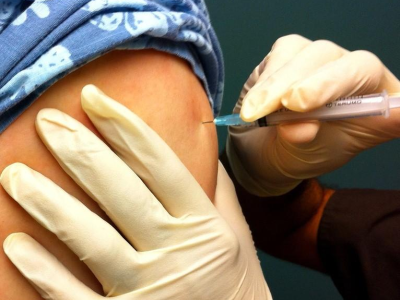Study makes case for 'watchful waiting' approach to kids' ear infections
Appropriate use of the "watchful waiting" strategy for management of acute otitis media (AOM) in children could reduce healthcare costs and improve health outcomes, according to a new study in Pediatrics.
Under current American Academy of Pediatrics (AAP) guidelines, physicians are advised to prescribe antibiotics for children 6 months or older who have severe signs of unilateral or bilateral AOM. But based on joint decision-making with parents, the guidelines also advise that clinicians can suggest observation for 48 to 72 hours before initiating antibiotic therapy if the symptoms are unilateral and non-severe. Current practice, however, appears to favor immediate antibiotic prescription for AOM, with recent data suggesting that US physicians prescribe antibiotics for AOM 95% of the time.
In the study, investigators examined the electronic medical records of 247 randomly selected patients who had been diagnosed as having AOM in the emergency department of an urban children's hospital from April 2014 through January 2015. These data were then incorporated into a decision-analytic cost-utility model of a hypothetical cohort of 1,000 children with AOM. The primary outcome was the incremental cost-effectiveness ratio (ICER) expressed in 2015 US dollars per disability-adjusted life year (DALY) averted from a societal perspective.
Of the 247 chart-reviewed patients with AOM, 231 (93.5%) were prescribed antibiotics, while 7 (2.8%) underwent watchful waiting and 9 (3.6%) were sent home without an antibiotic prescription. When the patient's records were evaluated using AAP guidelines for AOM management, 104 (42.1%) met the conditions for immediate antibiotic therapy, and 143 (57.9%) were eligible for watchful waiting. Of the patients for whom watchful waiting was an option, it was implemented only 4.9% of the time.
In the decision-analytic model, the investigators found that for every 1,000 patients with AOM, implementing watchful waiting for those who met the criteria would yield 514 fewer immediate antibiotic prescriptions and 205 fewer antibiotic courses ultimately taken, averting 14.3 DALYs and saving $5,573.
In this model, the authors write, using watchful waiting when clinically appropriate "was thus a dominant strategy, meaning it was superior to current practice by generating fewer DALYs at a lower cost."
The authors conclude that while increasing use of the watchful waiting approach would likely require more education for parents and providers, "appropriate use of the strategy could simultaneously reduce health expenditures, improve health outcomes, and be cost-saving to society."
Mar 3 Pediatrics study
Higher risk of mortality, costs for community-onset C difficile patients
Community-onset Clostridium difficile infection (CDI) is associated with increased risk of all-cause mortality and short- and long-term economic costs, according to a new study in PLoS One.
For the study, researchers estimated the attributable mortality and costs of community-onset CDI by conducting a population-based matched cohort study in which 7, 950 community-onset CDI patients identified in Ontario from 2003 through 2010 were matched with randomly selected uninfected subjects and followed through 2011. The investigators examined 30-day, 180-day, and 1-year all-cause mortality and evaluated the costs of publicly funded healthcare services. Costs were calculated in Canadian dollars.
The researchers found that patients with community-onset CDI had considerably higher risk of all-cause mortality and higher costs compared with uninfected patients. The relative risk for 30-day, 180-day, and 1-year mortality were 7.32, 3.55, and 2.59, respectively, and the cumulative 30-day, 180-day, and 1-year costs were $10,700, $12,517, and $13,312, respectively. In the stratified analyses, hospitalizations and physician visits accounted for the largest cost components across all phases.
"Our estimates of absolute and relative mortality and costs highlight the need for interventions to prevent community-onset CDI," the authors write.
Mar 3 PLoS One study











